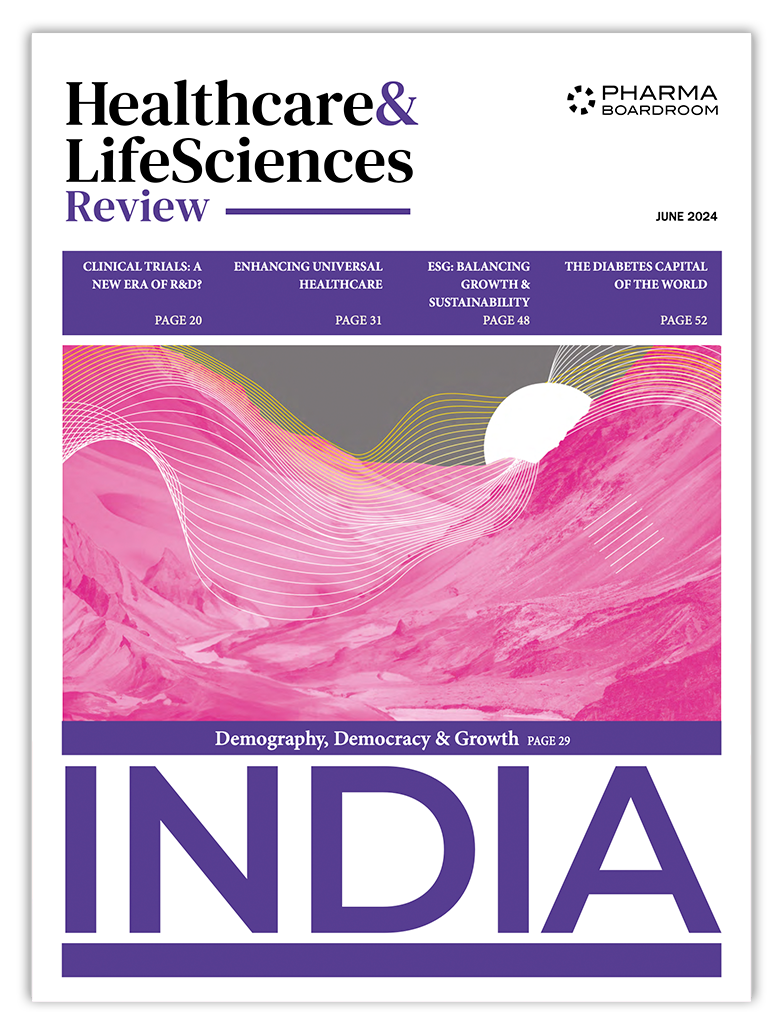To begin, would you please introduce Medicines Australia to Pharmaceutical Executive readers?
Medicines Australia is the national industry association for innovative pharmaceutical companies. . Just about every company engaged in the research and discovery of new medicines in Australia is a member of the association, so we have the capacity to effectively represent our industry’s issues to government in a comprehensive way. The association is more than 60 years old, and is firmly established in the national capital. We have a high quality relationship with the Australian government. A pivotal event for the pharmaceutical industry in Australia was passage of legislation in June 2007 which significantly reformed the Pharmaceutical Benefits Scheme. The PBS is a government-funded program which ensures that every Australian, irrespective of income or assets, has affordable access to prescription pharmaceuticals.. The PBS uses health technology assessment tools to evaluate new medicines on the basis of cost-effectiveness. The previous structure of the PBS made it difficult for industry to bring new medicines to the Australian marketplace, in part due to reference pricing – an arbitrary linkage of the price paid for patented medicines to the price paid for therapeutically comparable patent-expired medicines and their generic competitors. . Recent reform of the PBS severed these pricing linkages. This outcome provides much greater certainty around the long term pricing level of medicines not subject to brand competition. This reform has, however, come at a significant cost, with patent expired medicines subject to substantial price reductions, providing $3 billion in savings to the Australian Government over 10 years. That is a heavy price to pay for certainty. There are seemingly contradictory desires to encourage and reward innovation on one hand, and reduce expenditures on the other.
Can you speak to how these interests should be reconciled, given that the revenues that are supporting R&D are the same ones being reduced in order to alleviate the burden on PBS?
I have no doubt that the Australian government is absolutely committed to sustaining and building a culture of innovation in Australian industry. Industry must of course secure a commercially viable return on its investments, particularly in R & D, and that objective remains challenging in this country. The new government, to it’s credit, recognizes the extent of the problem and has set up the Pharmaceutical Industry Strategy Group (PISG), with a clear mandate to develop a viable program, to be funded by the Australian government in the 2009-10 federal budget, that will significantly contribute to the viability of innovation in our industry. Innovation Minister Kim Carr is very optimistic, although the nature of the problem may be greater than initially thought. However, the innovative pharmaceuticals industry is undoubtedly encouraged by the Government’s determination to find a way of sustaining and expanding Australian based research and development, clinical trials and manufacturing. That said, there are very real difficulties for our industry in sustaining the level of domestic manufacturing Australia has enjoyed in the past. A number of pharmaceutical manufacturing plants have been closed or downsized in recent years. Many are now ageing and will require significant capital reinvestment if they are to remain viable. The future of pharmaceutical manufacturing in Australia is therefore uncertain. The reality is that Australian manufacturing operations must remain competitive within global supply chain arrangements. Each company makes assessments about deployment of capital in terms of global requirements, market conditions and investment incentives available in a range of competing destinations. This drives competition within companies and between countries to secure capital investment. Australia is resource-rich, with a robust economy, high-quality infrastructure and a very well educated workforce. However, certain taxation, policy and regulatory arrangements are not as attractive here as elsewhere. Australia must combat substantial government subsidies and much lower tax levels in other countries competing to attract finite industry investment. In this regard, the Australian taxation regime is not competitive with that of Singapore, Ireland, or that of many other emerging economies. Looking at P3, the current industry stimulus package worth $150 million and split between a number of companies, this represents a relatively small amount of money.
Looking at the types of schemes PISG will choose to reinvigorate the industry, what will be the key points to hit?
The first thing PISG must do is to clearly determine a realistic and achievable objective. There will undoubtedly be some robust conversations, during the first couple of meetings, about whether Australia can realistically expect to sustain and grow a globally competitive onshore manufacturing capability. That said, Australia has great potential and a tremendous track record in medical research. I expect PISG will encourage our government to focus on our comparative advantages.
In envisaging this future, what do you see as being the likely reality?
In my view, an obvious opportunity for significant upscaling here lies in R&D and clinical trials, particularly early stage trials. This reflects the quality of researchers, universities, and hospitals in Australia. For example, we have a number of phase one clinical research facilities that are very well-regarded internationally. There is also a proliferation of young, early-stage biotechnology companies that are blossoming, particularly in Victoria, New South Wales and Queensland. This points to a major opportunity for Australia to contribute significantly in recharging the global R&D pipeline. I see very encouraging potential for big pharma to source many innovative future products from the Australian biotechnology sector. My sense is that this will be a really exciting space over the next 20 years. This is not to say that Australia will overlook sustaining a viable pharmaceutical manufacturing sector, though I do think the focus will be on smaller scale, highly value added operations. If we’re going to seek significant investment in onshore manufacturing operations, we must find and exploit niche opportunities rather than large-scale, lower value-added small molecule manufacturing, for which there is already very significant global competition.
What do you see as the most promising niches?
Convergence technologies offer some as yet unexploited opportunities, and the potential for biologic medicine manufacture in Australia is enticing. The production of vaccines and API products in Australia has been very successful and this area will undoubtedly continue to grow strongly. More broadly however, I am sure that the past will not be an indicator of the future. We don’t know exactly what that future will entail, but there’s great optimism. The challenge for PISG is to identify and articulate a comparative advantage Australia can leverage. The fact is, our government is not going to engage in an incentives auction with countries like Singapore; it’s just not going to happen. We need to find other strategies for presentation to the government, clearly demonstrating intellectual, social, economic and benefit from precise, targeted, and finite investment incentives.
What is it about the theoretical ideal behind not getting into such incentive wars? In a broad sense, on one side there are incentives to decreasing costs, and on the other side to increasing benefits. Why has the government chosen to focus on the latter over the former?
I think there is wariness, fuelled by bad past experiences – although not in pharmaceutical industry – where government has attempted to pick winners and invested very heavily, only to find the promised benefits failed to materialize. So there is scepticism, perhaps not so much in Health and Innovation, government departments with which we work most closely, but more so in Finance and Treasury, as to the real benefits of government funded incentives. Medicines Australia recognizes that innovation minister Carr and health minister Roxon may agree with us as to the potential benefits of targeted incentives, but they in turn must persuade their ministerial colleagues in Cabinet. We must provide the ministers who have policy responsibility for health and innovation with compelling arguments they can use in Cabinet to convince their colleagues of the importance of appropriate measures that will enhance the global competitiveness of Australian industry. .
You mention a tendency away from picking favourites, yet the government just subsidized Toyota’s new Prius assembly plant to the amount of $72 million – after the decision had already been made to locate in Australia. That seems like a perfect and recent example of picking a favourite. Where’s the disconnect?
There are always political considerations in virtually every government decision. Australia has a long history of bending over backwards to sustain the viability of automotive assembly operations. Other industry sectors look with some envy at government’s preparedness to make substantial investments in that particular endeavour. That said, there are good reasons why the government seeks to maintain a viable automotive assembly industry. Medicines Australia would argue that there are even stronger reasons to sustain an innovative pharmaceuticals industry in this country, but we have to make that case in a compelling manner. The political reality is that there are large numbers of workers in marginal electorates who are employed in automotive plants, creating an additional level of incentive for government to confront the problems in those industries. That is a simple reality in a democracy. The pharmaceutical industry’s argument isn’t going to be based upon sustaining large workforces in relatively low-skilled assembly line employments. Our emphasis is on the importance of harnessing the knowledge based skills of a highly-educated workforce in complex, high value-added industry. I think our most likely opportunities are in niche manufacturing, R&D, and clinical trials. Developing a policy framework, within which government can support those opportunities through targeted incentives, will be the task of the PISG over the next couple of months.
Where do you see the sector in the next five to 10 years?
Pharma is an industry in transition. There will likely be further rationalization of local operations – driven by global imperatives, not necessarily by Australian initiatives. Australian businesses will of course look to become as efficient as possible. Medicines Australia will be working with the government to lower the barriers which impede or slow medicines’ access to the market. Looking ahead, my expectation over the next five years is the achievement of a much more efficient regulatory and reimbursement system for innovative pharmaceuticals in Australia, and if work in which we are currently engaged is as successful as we believe it will be, in five years we will have reduced time to market of innovative new medicines by at least a year. This in itself will do much to buttress the bottom line of pharma companies in Australia, it will attract the interest of global head offices, and it will facilitate serious consideration of investment in this country. If we can optimise market efficiency, we will be able to demonstrate to the industry globally that Australia is a really good place to do business.
What is your final message to Pharmaceutical Executive readers who may be looking to take advantage of such a market?
The immense quality of Australia’s R&D capability, our capacity to deliver consistently high quality clinical trials outcomes in an efficiently regulated environment, and our skills in specialised, short run and niche manufacturing, warrant serious investigation.
On a personal note, how has your military experience informed your approach to management in a very different environment?
My years as young armoured cavalry officer taught me the importance of strategic clarity, candour, delegation and teamwork. I discovered early that collaboration almost always delivers superior outcomes to confrontation – but that when it’s time to fight, there are no prizes for second place. Like every other industry, ours exists only because of the people with whom we work. When they know they are valued, trusted, responsible and empowered, there is little that cannot be achieved.







